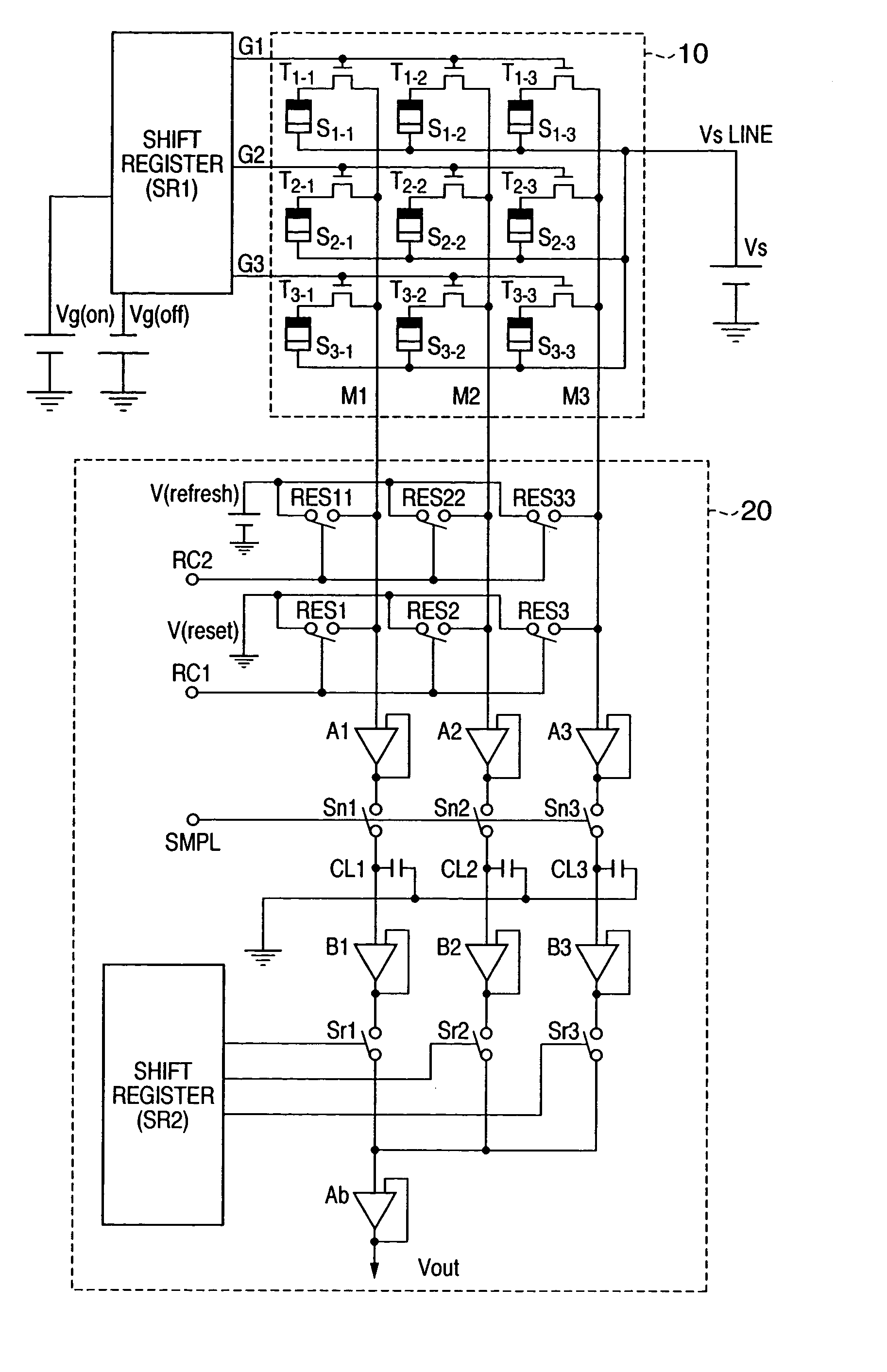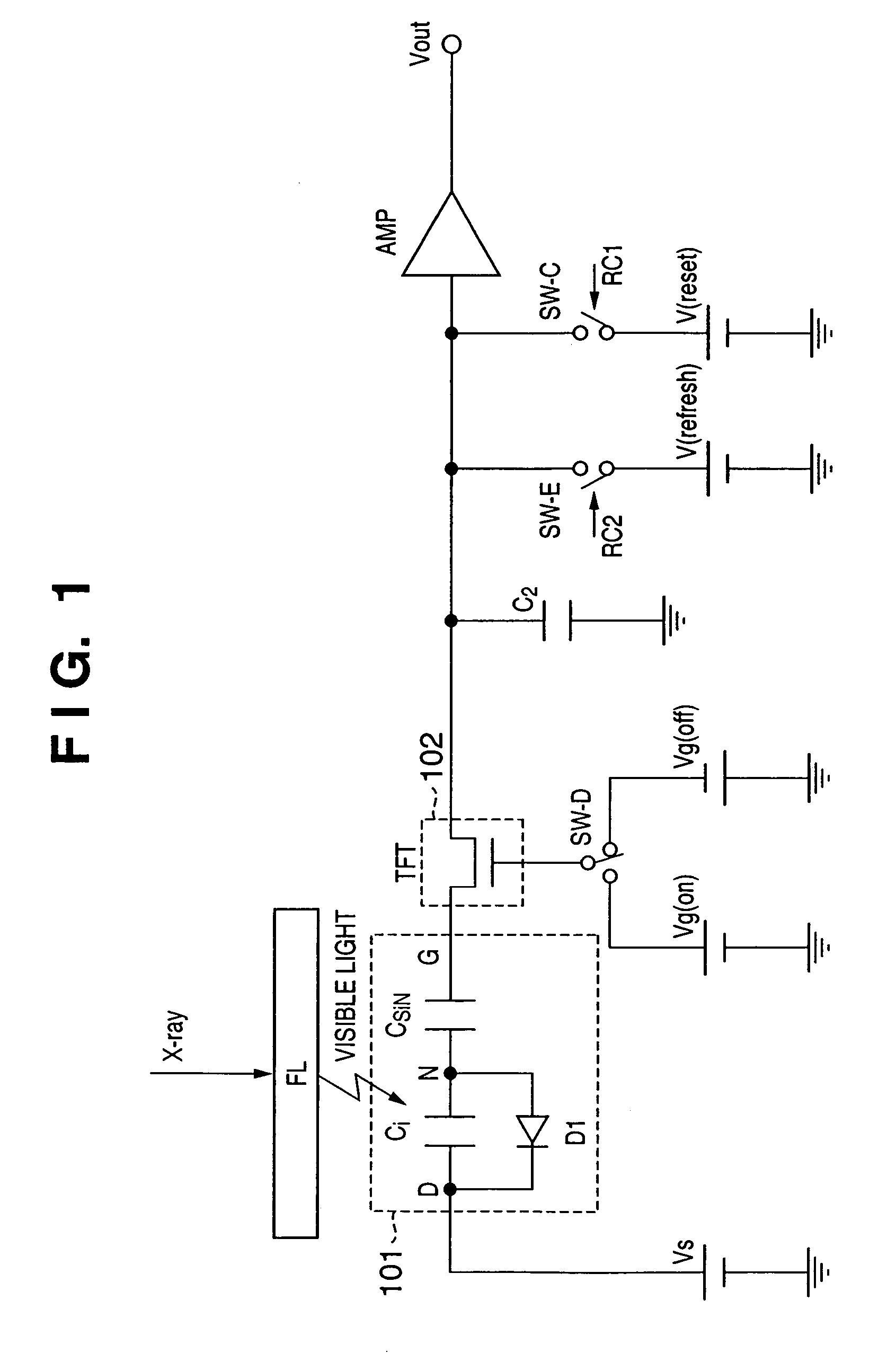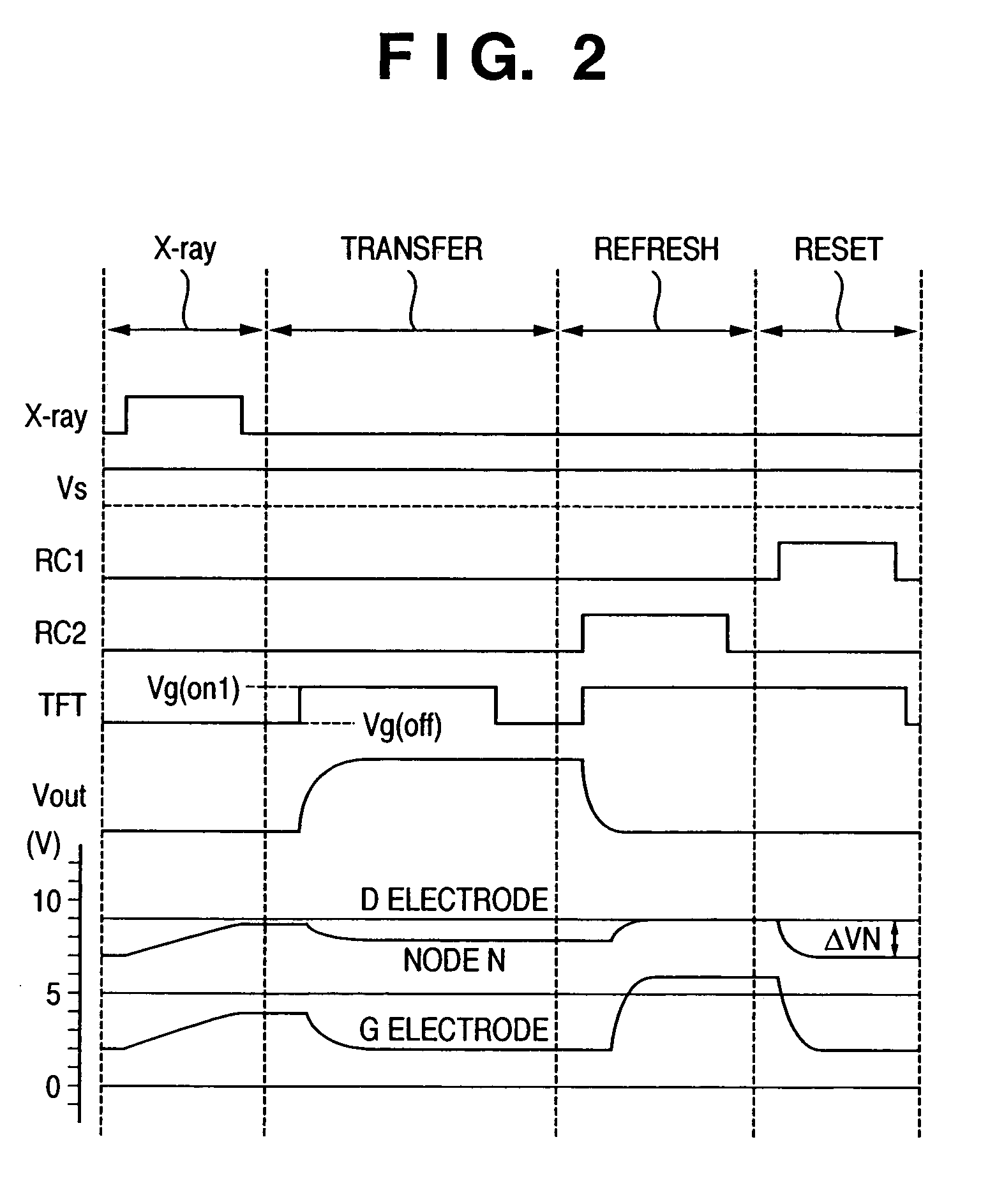Radiographic apparatus
a technology of radiographic equipment and beam, which is applied in the direction of radiographic control devices, instruments, television systems, etc., can solve the problems of reducing frame frequency, unstable current flow, and no current flow, and achieve the effect of stably obtaining moving images and high speed
- Summary
- Abstract
- Description
- Claims
- Application Information
AI Technical Summary
Benefits of technology
Problems solved by technology
Method used
Image
Examples
first embodiment
[0097]FIG. 1 is an equivalent circuit diagram of one pixel of an X-ray imaging apparatus according to the first embodiment of the present invention.
[0098]As shown in FIG. 1, a photoelectric conversion element 101 includes a capacitance component Ci formed from an i-layer that is made of, e.g., hydrogenated amorphous silicon and serves as a semiconductor photoelectric conversion layer, and a capacitance component CSiN formed from an insulating layer (an injection inhibiting layer which inhibits injection of carriers of both conductivity types) that is made of, e.g., amorphous silicon nitride. When the photoelectric conversion element 101 is saturated, i.e., no electric field (small electric field) is formed between the D electrode and a node N (in the i-layer), the junction (the node N shown in FIG. 1) between the i-layer and the insulating layer cannot store hole carriers because electrons and holes generated by light recombine.
[0099]That is, the potential of the node N is never hig...
second embodiment
[0143]FIG. 6 is an equivalent circuit diagram of one pixel of an X-ray imaging apparatus according to the second embodiment of the present invention. In the equivalent circuit diagram of the first embodiment shown in FIG. 1, the D electrode of the photoelectric conversion element 101 is biased by the predetermined voltage Vs. In the second embodiment, however, a voltage Vs and voltage Vref can be switched by a switch SW-F.
[0144]As a characteristic feature of this embodiment, the voltage from the G electrode side or that from the D electrode side can be selected as an application voltage to execute the refresh operation of a photoelectric conversion element 101. For example, to acquire one still image, a refresh bias is applied from the D electrode side. That is, an operation based on the timing chart shown in FIG. 28 is executed. On the other hand, to acquire a plurality of still images, a refresh bias is applied from the G electrode side. That is, an operation based on the timing c...
third embodiment
[0151]FIG. 12 is an equivalent circuit diagram of one pixel of an X-ray imaging apparatus according to the third embodiment. The same reference numerals or symbols as in the X-ray imaging apparatus shown in FIG. 1 denote the same component in FIG. 12. Different constituent elements will mainly be described below.
[0152]A switch SW-G shown in FIG. 12 is selectively switched to apply one of a reset bias V(reset) and refresh bias V(refresh) to the noninverting terminal (+) of the operational amplifier (AMP). A capacitive element Cf stores (integrates) a signal current from a photoelectric conversion element 101 through a TFT 102 and is connected between the inverting terminal and an output terminal Vout of the operational amplifier. A switch SW-H is connected in parallel to the capacitive element Cf to reset the integrated signal charges or refresh the photoelectric conversion element 101 through the TFT 102. The switch SW-H is controlled by an RC signal.
[0153]A power supply Vg(on) turn...
PUM
 Login to View More
Login to View More Abstract
Description
Claims
Application Information
 Login to View More
Login to View More - R&D
- Intellectual Property
- Life Sciences
- Materials
- Tech Scout
- Unparalleled Data Quality
- Higher Quality Content
- 60% Fewer Hallucinations
Browse by: Latest US Patents, China's latest patents, Technical Efficacy Thesaurus, Application Domain, Technology Topic, Popular Technical Reports.
© 2025 PatSnap. All rights reserved.Legal|Privacy policy|Modern Slavery Act Transparency Statement|Sitemap|About US| Contact US: help@patsnap.com



